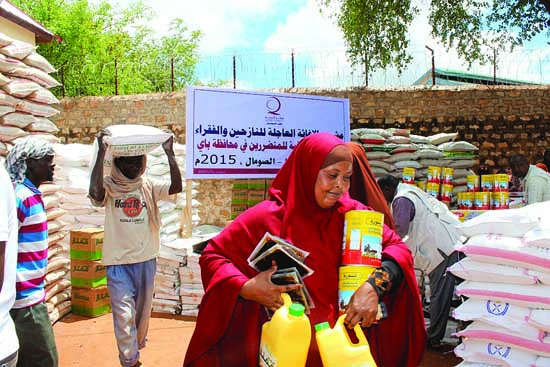QC Drought Relief Project Benefits 71,000 People In Somalia

Qatar Charity (QC) has implemented an urgent relief project to support people hit by drought in Somaliland, in the north of Somalia. More than 71,000 people benefitted from the project which included health care services and food supplies. For the past two decades, Somalia has been through crises and natural disasters described as the worst globally. Around 1.1 million displaced people are living in big cities of Somaliland, Puntland and south of Somalia.
According to Food Security and Nutrition Analysis Unit reports issued this August, the food situation in Somalia has been deteriorating for the past six months; 855,000 people suffer from urgent conditions; and 3.1 million people face the hunger threat if the situation remain the same the coming months. During two phases of the project, dry food supplies were distributed to 7,500 families (52,500 people) such as rice, sugar, date, milk and oil. Some 18,873 beneficiaries also received health services through medical convoys.
Relief campaigns covered three areas: north of Somalia (Somaliland), northeast (Puntland), and south of Somalia; 4,000 food boxes were distributed to the people of Somaliland, 1,000 to the people of Puntland and 2,500 to the people of south Somalia. The boxes included rice, flour, sugar, oil, milk and date. Seven medical convoys were sent to 45 villages and camps in the affected areas. Medical reports showed that the most common diseases were those related to inflammations, especially in the pulmonary and urinary systems, and diseases resulting from malnutrition infecting children under five.
Under its ‘Early Relief’ project for the flood-affected in Middle Shebelle, QC has implemented rehabilitation and income-generating projects for the affected families to improve their living standards; 750 sheep were distributed to 150 families; each receiving five. QC has also repaired fields for the benefit of 250 affected families who used to work in farms before their lands were damaged due to floods, admeasuring 250 hectares fit for cultivation.
Source: Peninsula